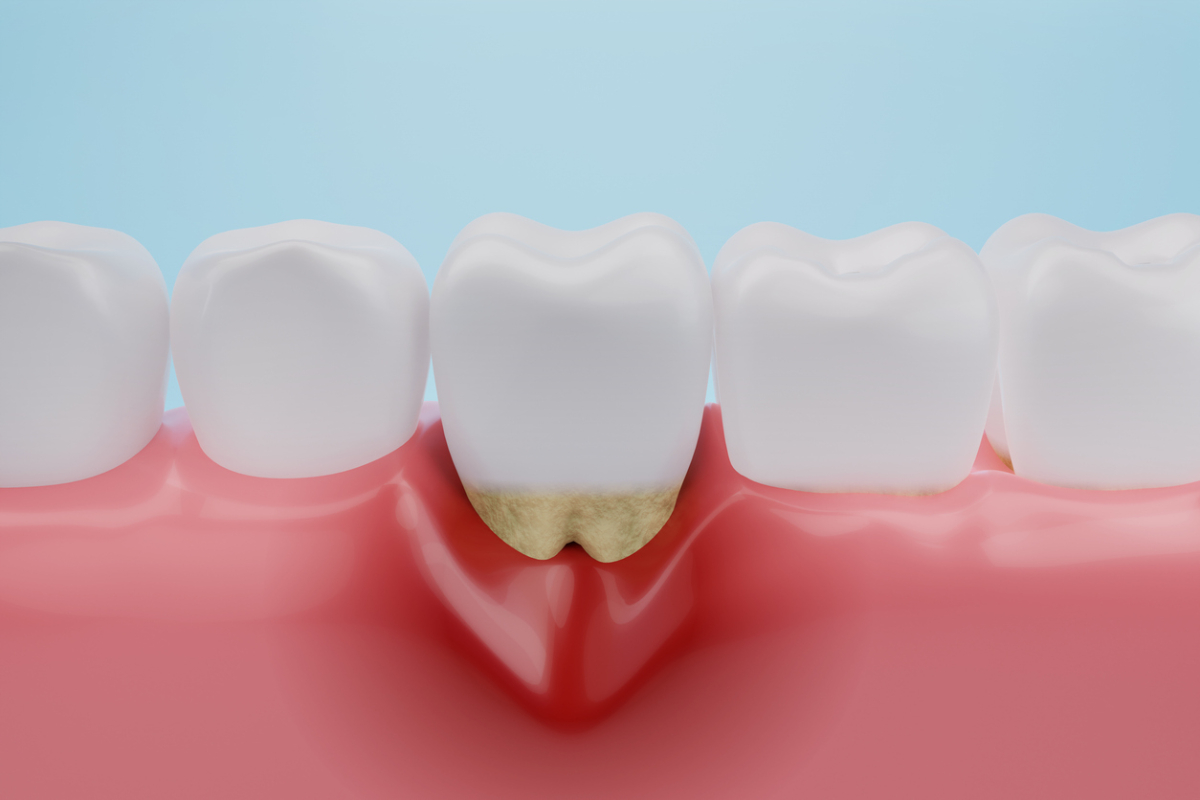Periodontitis, a later stage of gum disease, is a chronic infection of the gum tissue that can lead to oral health issues, including gum recession, loss of jawbone density, and even tooth loss. But can periodontitis be cured? In this article, we address this question and discuss solutions that modern periodontics can offer.
Can Periodontitis Be Cured?
Periodontitis is most often caused by bacteria that live in plaque and tartar that accumulate on the teeth and in periodontal pockets (the spaces between the gums and the teeth). Unfortunately, periodontitis, the advanced stage of gum disease, can not be fully cured. However, it can be successfully controlled and prevented from further progression with proper care and treatments, which we will discuss below.
On the other hand, gingivitis, the earliest stage of gum disease, can be fully reversed if addressed immediately. The early signs of gum disease include:
- Red and swollen gums or gums that appear soft and smooth instead of being firm and textured
- Gums that bleed easily when you brush your teeth or floss
- Persistent bad breath or unpleasant taste in the mouth that does not go away after brushing and flossing (signifies bacterial infection)
It is crucial to consult a dentist immediately if you notice any of these signs to stop the progression of gum disease. In some cases, it might be easy to overlook these symptoms. That is why it is so important not to skip yearly visits to a dental office for checkups.
Treatment Methods for Periodontitis and Gingivitis
As we mentioned before, the primary cause of gum disease is bacterial growth. Since bacteria live in plaque and tartar, removing and preventing them, as well as reducing infection, is the main priority when treating gum disease. Let us examine the treatment methods your doctor may recommend for managing gum disease.
Treatments for Gingivitis
Gingivitis can be treated with several steps:
- Improved daily oral hygiene is the first and most crucial step in treatment. Professional help may not be sufficient if you do not remove plaque from your teeth daily at home.
- Regular professional cleanings (in some cases, as often as every 3 to 4 months) help remove tartar that cannot be removed without special dental instruments at home. As a result, the harmful bacteria and infection in the mouth are reduced.
- Regular fluoride treatments (after each cleaning) help strengthen the enamel, making teeth more resilient to bacteria, and reduce bacterial growth in the mouth in general.
Treatments of Periodontitis
Apart from improved daily oral hygiene and regular professional cleanings and fluoride treatments, which remain a priority, other methods (or their combination, in most cases) might be employed:
- Scaling and root planing (also known as deep cleaning) help remove plaque and tartar from periodontal pockets, prompting the gums to reattach to the teeth.
- Oral antibacterial medication can be prescribed to suppress the infection and fight bacterial growth.
- Laser procedures are designed to remove infected gum tissue, promoting its healing and regeneration.
- Pocket reduction surgery is used when scaling and root planing are not sufficient.
- Bone and gum grafting, also known as guided tissue regeneration, is used to restore the gums or jawbone and promote its regeneration.
- The Pinhole Surgical Technique is a cosmetic procedure that is typically used once the infection is under control. Its primary purpose is to improve the appearance of receding gums by repositioning the tissue.
Treat Periodontitis at Turquoise Dental
If you notice signs of gum disease, make an appointment with an experienced periodontal dentist at Turquoise Dental as soon as possible. Remember that the earlier you start your treatment, the better your chances of success will be. We look forward to your visit.




